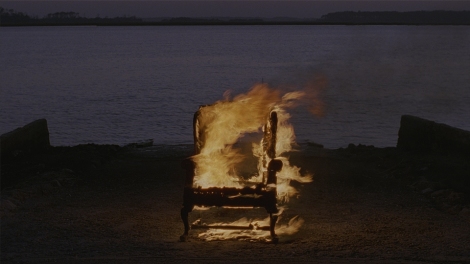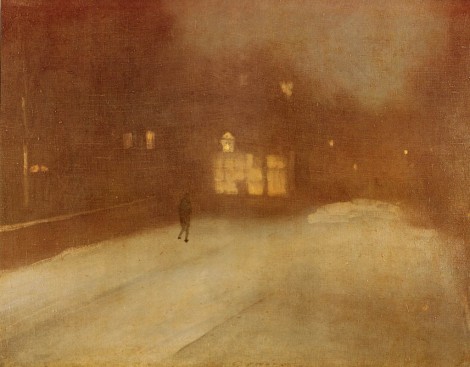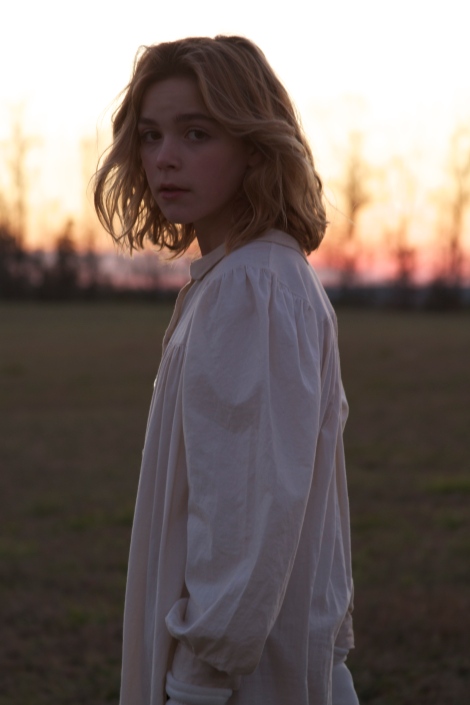
Grainger David is an award-winning film director and writer, originally from South Carolina. His 2012 short film, The Chair, toured the international festival circuit to significant critical acclaim and was the only American short film accepted into the 2012 Cannes Film Festival. In 2013, Mr. David was announced as the recipient of a San Francisco Film Society Kenneth Rainin Foundation Grant for Screenwriting for his upcoming feature-length film, Nocturne. Additionally, he was awarded a 2013 SFFS FilmHouse Residency while on post-production work on his latest short film, The Edge of the Woods. Grainger David spoke with Sean Malin of CineMalin: Film Commentary to celebrate his residency, to explore the themes his films have picked up from the South Carolinian environment, and to take a break from the constant ruckus of his editing studio. This interview has been transcribed, edited, and compressed from audio for publication.
Sean Malin: You’re just coming from the editing room now. Are you working on a new project of your own?
Grainger David: No, I’m working on a commercial for a Santa Monica-based company called Red Interactive. This is the first ad I’ve directed, and it’s been a cool experience. I have found that I enjoy directing things that I didn’t write! It’s nice to leave the tortured writer part of myself at home sometimes…
SM: You were announced as the recipient of a San Francisco Film Society residency today. When you’re repped by a certain production company or agency, do they have to sign off on you accepting that kind of gig? Or do they just go with the flow of your career and try to keep you employed?
GD: This was an opportunity that I pursued on my own. But from the agency perspective, they are very supportive – I think they just want their clients to seize every good opportunity and to make the most of them. Any type of additional exposure and support for your film or career, especially when you are just starting out, helps them to do their jobs.
SM: I’m fascinated by the process that a filmmaker goes through to become a recipient of a film society grant or award. How did that happen for you?
GD: The San Francisco Film Society had a representative at the South by Southwest Film Festival last year [2012] when my short, The Chair, was there. She had seen the trailer online and e-mailed me to set up a meeting in Austin. We talked about the kind of work SFFS does and the projects that I was interested in making next. A few months later, my wife got a job in San Francisco and we ended up moving there; I got in touch with the Film Society immediately and started a grant application. It was all very lucky.
SM: And serendipitous, perhaps.
GD: Oh, yeah…definitely. But it also speaks to how proactive they are – I think they put a lot of lines in the water, and some of them get bites.
SM: You’ve been at work on a follow-up to The Chair called The Edge of the Woods this past year, and at the same time, you’re now getting funding for Nocturne, a feature. How do you divide your time between those two projects?
GD: I actually shot The Edge of the Woods about a year ago as of now. We’re mostly done with the edit, but we still have a lot of visual effects work to do for the CGI monster in the movie. We’re working with this amazing VFX house, Framestore, whose work on the film so far is just awesome. But they’re squeezing us in between big studio projects, so it is slow going. At this point, I spend most of my time writing Nocturne, but whenever Framestore turns in a new batch of shots, I drop everything to continue my work with them..
SM: The storyboard images that Framestore provided for your Kickstarter campaign are truly extraordinary. Did you foresee when you wrote the film that it would attract an effects company with so much renown in the science fiction and fantasy film worlds?


GD: You know, it was a weird process. I wrote the movie something like five years ago. I thought it was good – I mean, I liked it – but I realized right away that there was no way for it to ever get made, so I put it in a drawer and forgot about it. It’s a fifteen-minute short film with a walking, talking creature that has to give a detailed, emotive performance. There was just no way it was happening, ever. But then I moved back to South Carolina to make The Chair and discovered that South Carolina Film Commission has this amazing short film grant program. So I took the script out of my drawer, sent it to them, and they liked it. Still, even with a $70,000 grant, it is a stretch *laughs*. So I shopped it, basically, to any visual effects company that would listen. I really explored everything from practical puppetry to CGI effects. Framestore was at the very top of my list, but I figured I had no chance with them. But they really loved the character and the script, and they had the resources to make [the film] happen. As you mention, the storyboard images were so good, and it just keeps getting better. I have been blown away by the quality of their work at every stage.
SM: Seth Rogen and Evan Goldberg just released their directorial feature, This is the End, which is similar to your film in that it is performance-based, effects-heavy, and an early feature for them as filmmakers. There’s a proliferation of these lower-budget effects films lately, what with Neill Blomkamp’s District 9 (2009) and Josh Trank’s Chronicle (2011). Would you even have been able to get Edge of the Woods greenlit when you first started making short films as a student filmmaker?
GD: No, no, I definitely think those films have opened up a cool segment of the marketplace. You also have films with even more low-fi effects like Monsters [Edwards, '10], or Black Swan [Aronofsky, '11], or even something like Take Shelter [Nichols, '11]. These films have a much more realistic, character-driven feeling than your traditional effects-laden blockbusters. I love that.
SM: You have only made short films so far in your career. Have you always wanted to make features, or would you stick with shorts if you had the financial freedom to do so?
GD: I like both; I love shorts and I wish there a more significant marketplace for them. But they are treated mostly as calling cards or proof-of-concept pieces, and that makes them a bit gimmicky in general. I would love to see bigger filmmakers go back and forth between shorts and features the way some authors write both stories and novels. But for filmmakers, it feels like you make one or two shorts, and then it’s time to move. There’s a sort of…
SM: A pressure.
GD: It’s like, “a full-length film or nothing else.” It’s too bad. I have written a lot of shorts and would love to make some of them one day. It would be nice to acknowledge that not every story worth telling is exactly ninety minutes. But the reality of this world is that features are kind of ‘where it is.’
SM: You described your career as burgeoning, but it seems like you have already had the first of your big breaks with the release of The Chair.
GD: For sure, one hundred percent. The Chair was a really big break for me.

SM: Did that lead to making Nocturne through a courtship by someone else, or had you already been working on the ideas for it?
GD: I was working on it on my own, and I was also definitely NOT courted by anyone just to work on that story, specifically. But interest in The Chair led, for sure, to interest in what sort of feature I might make.
SM: The timeline immediately following how much attention you got from The Chair was quite full, it seems. You must have already been working on The Edge of the Woods as well as developing the script for Nocturne.
GD: It was very busy. Dividing my time then was really difficult for me, actually. I was editing The Edge of the Woods, and preparing Nocturne while dealing with all this new attention and pressure. Plus, I moved twice during that time: from South Carolina to Los Angeles, and from there up to San Francisco. It was challenging.
SM: Now that you’ve received the FilmHouse Residency and the KRF Grant from SFFS, what’s your progress on Nocturne?
GD: I’ll probably be working on the script through the summer. I move into the FilmHouse August 1st, and I’m hoping to use that office space and the feedback from that program to get the film off the ground over the next year
SM: I read in an interview that you had considered Nocturne as a series based on the group of paintings by J.M. Whistler. Is that still the project’s direction?

GD: That series was kind of my original inspiration. The paintings are…how could I describe them?
SM: They have ephemeral qualities.
GD: Yes, very ephemeral, or amorphous, almost. I like that style a lot. They are blurry watercolors, they happen mostly at night, they have this sense of mystery and uncertainty. Those are some things that are all somewhat in The Chair, and they build a mood that I would like to write towards. Once all these projects are finished, I’m not sure that anyone will be able to recognize those qualities, but it’s always nice to have a place to come from and to go back to to remind yourself of what inspired you. I also really like the idea of a thematically linked series – Nocturne in Blue and Gold; Nocturne #22, etc. I tend to work on more than one script at a time, and I used to beat myself up for that. But approaching the work as a seris that shares (a) setting(s) and tone(s) allowed me to feel that I was building a story world. If nothing else, that approach has been a useful delusion.
SM: Your films, and even the storyboards or the basic synopses or titles of them – I mean, The Edge of the Woods is a good example – are dark and quite grim. What is the germ for these kinds of graphically upsetting, neo-sci-fiction projects? Is it possible that South Carolina bred these thematic links in you?

GD: *Laughs* I am not sure I could really answer that question, though I see what you mean. I am drawn to dark, mysterious storytelling. I think there are roots in Southern literature, and the Gothic. There’s a Southern influence. I mean, I love Edgar Allan Poe and Flannery O’Connor and all that stuff. I might be extrapolating here, but I think the essence of the Gothic is the Haunted House: a place that has not left its past behind and is now warped by that. That’s a very Southern idea, and I think that’s maybe where it comes from in me.
SM: You have thrown out Whistler, Poe, and O’Connor as influences on your work, but coincidentally, none of them are filmmakers. Are there any you draw from for your films?
GD: There are really so many…
SM: If you’d like to narrow it down, who are or who will be the inspirations for Nocturne?
GD: I put them together in very weird ways *laughs* I don’t know if they’ll even translate to the work I’m actually doing! Let’s see. Stanley Kubrick, David Lynch, Terrence Malick. A twisted bastard love child of those three sounds like a nice direction for me to go in. I like anything that has a psychological thriller element and that can evoke feelings of being in a strange dream.


Pingback: Interview with Eva Weber | CineMalin: Film Commentary and Criticism·